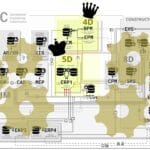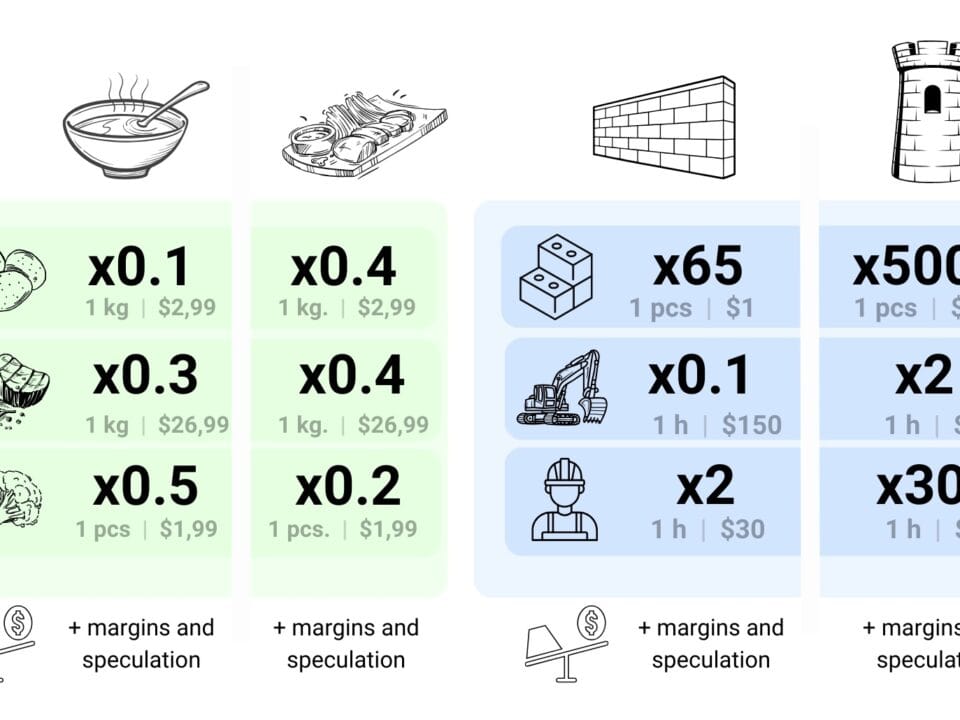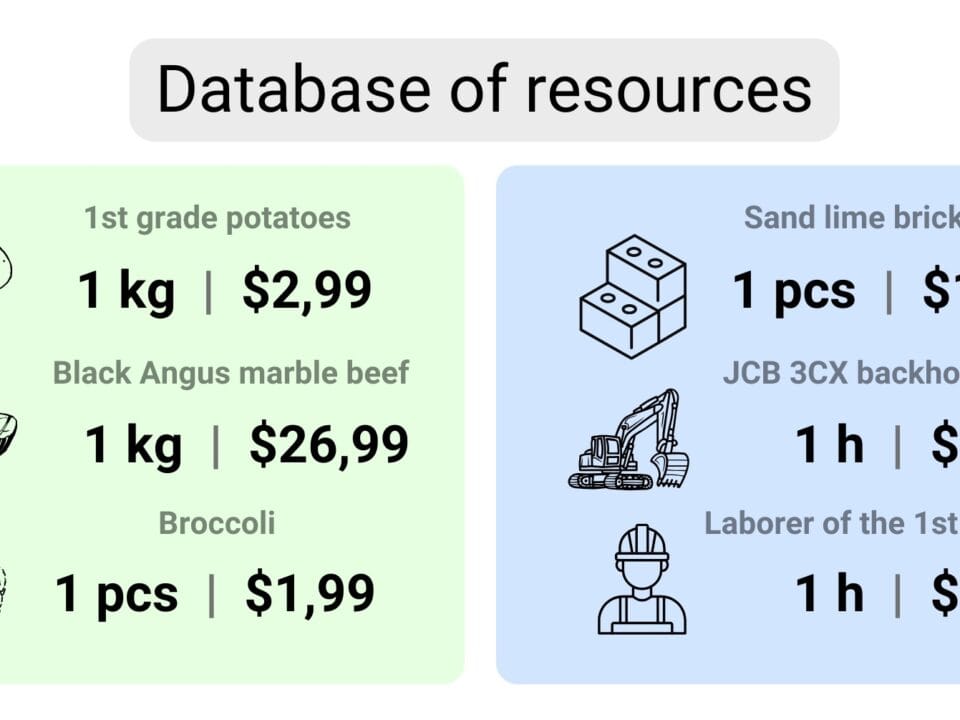A variety of estimating methods are used by costing professionals, each focusing on a specific type of data, availability of information, and level of project detail. The most common include:
Resource-based method: estimating the estimated cost of a project based on a detailed analysis of all the resources required, such as materials, equipment and labor. This method requires a detailed list of all the tasks and resources required to accomplish each task, followed by a calculation of their cost. This method is highly accurate and is widely used in cost estimating.
Parametric method: uses statistical models to estimate costs based on project parameters. This may involve analyzing the cost per unit of measure, such as building area or scope of work, and adapting these values to the specific project conditions. The method is particularly effective in the early stages when detailed information is not yet available.
Unit Method (Unit Cost Method): calculates the estimated cost of a project based on a cost per unit of measurement (e.g. per square meter or cubic meter). This provides a quick and easy way to compare and analyze the cost of different projects or parts of projects.
Expert judgment (Delphi method): based on the opinions of experts who use their experience and knowledge to estimate the value of the project. The approach is useful when accurate baseline data are not available or the project is unique.
It is worth noting separately that the parametric method and expert assessments can be adapted to machine learning models. This allows you to automatically generate project cost and schedule forecasts based on training samples. Examples of using such models are discussed in more detail in the chapter “An example of using machine learning to find project cost and schedule” (Fig. 9.3-5).
Nevertheless, the resource-based method remains the most popular and widely used in the world practice. It provides not only an accurate assessment of the estimated cost, but also allows to calculate the duration of individual processes on the construction site and the entire project as a whole (more details in the chapter “Construction schedules and 4D -project data”).





















